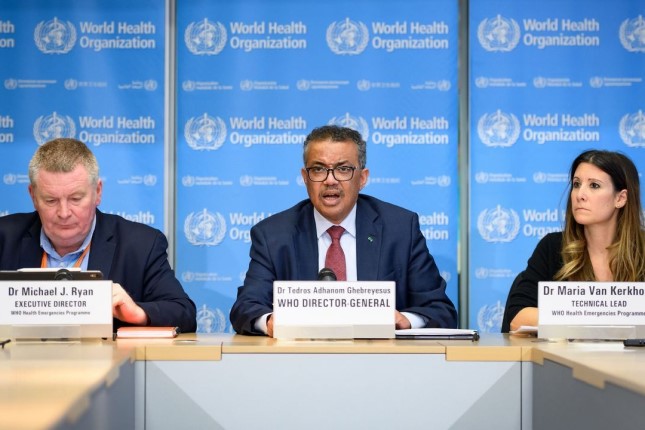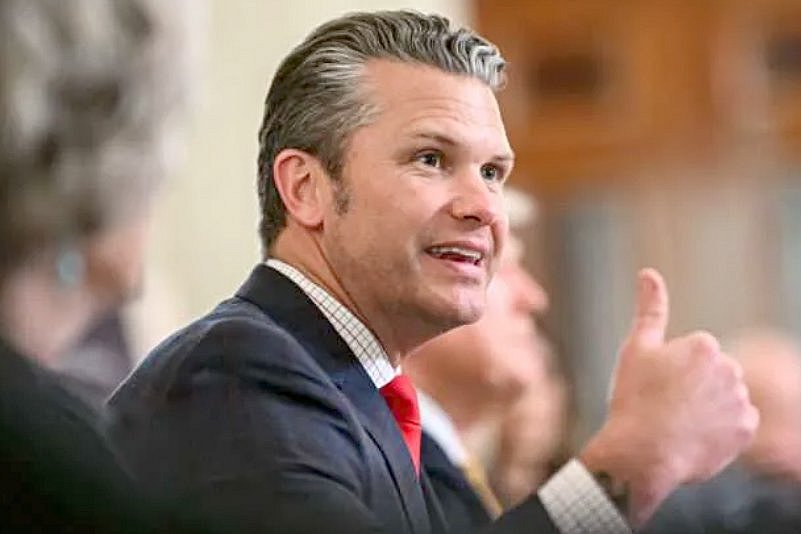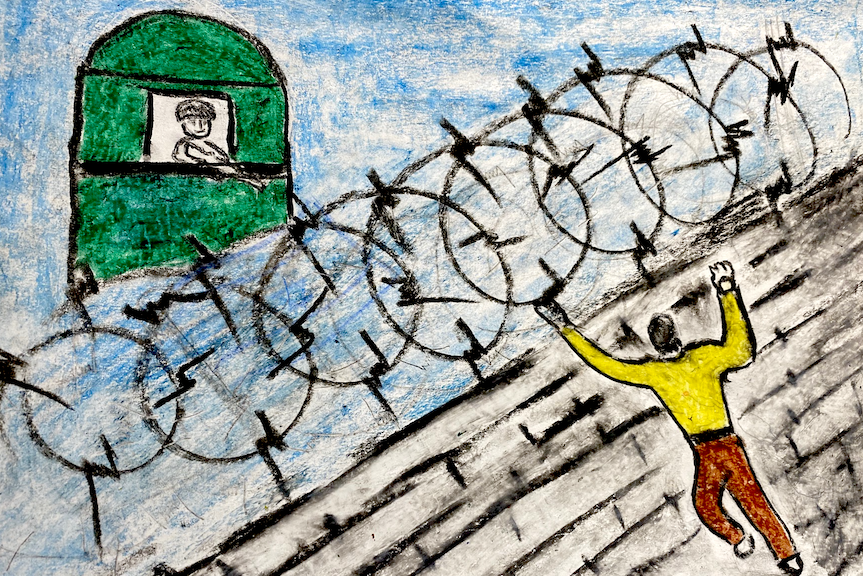Most of these cases come from South Korea, which is an outlier, not so much in the intensity of the pandemic, as in collecting and reporting statistics on it. The WHO cautions, “Currently, reported cases do not accurately represent infection rates due to the reduction in testing and reporting globally. During this 28-day period, 44 percent of countries reported at least one case to WHO—a proportion that has been declining since mid-2022.”
In effect, the WHO is suggesting that the 56 percent of countries not reporting any cases are simply not bothering to count COVID infections, while those reporting small numbers are only going through the motions.
According to the international public health agency, global cumulative cases reported to the WHO are approaching 770 million. COVID deaths are approaching seven million. However, including excess deaths over the number expected based on historical trends, a more accurate figure, particularly for countries with poorly functioning health reporting, the accepted estimate stands at a catastrophic 24.6 million deaths or 3.5 times the official figures.
The disparity may be even greater: when one compares today’s figures to those from one year ago, while there have been a little more than half a million COVID deaths officially reported worldwide, there have been 4.2 million excess deaths, or a difference that is more than eight-fold higher.
Since last month, even though reported COVID deaths have fallen as low as seven per day, excess deaths have nearly doubled, with more than 11,400 per day. The ludicrous disparity in these figures only underscores the tremendous efforts made by every government across the globe to hide the damning reality from their populations.
During the August 9 WHO coronavirus press brief, Director-General Tedros Adhanom Ghebreyesus noted that since the agency officially ended the emergency phase of the COVID pandemic, only 25 percent of countries and territories have reported death numbers to the WHO and only 11 percent have reported hospitalization and ICU admission figures, which are currently on the rise as the summer COVID wave is surging throughout the northern hemisphere.
He said, “WHO continues to assess the risk of COVID-19 to the global public as high. The virus continues to circulate in all countries, continues to kill and continues to change.” On the emergence of the latest variant of interest, EG.5 (accounting for 17 percent of all global cases), and other highly mutated strains, he cautioned, “The risk remains of a more dangerous variant emerging that could cause a sudden increase in cases and deaths … Today, on the advice of the [review] committee, I am issuing standing recommendations for countries in seven major areas. These recommendations reinforce the advice that the WHO has provided to countries in its COVID-19 Strategic Preparedness and Response Plan published in May.”
These recommendations include tracking and testing for COVID-19 in the population, implementing measures to reduce the risk of transmission, collaborating with national public health agencies to track new strains, reporting on vaccine effectiveness, and conducting critical research in understanding the causes of and treatment for post-viral syndromes. Additionally, the WHO has called for reporting trends in infection rates, severity of disease and deaths. Most importantly, they call for the equitable distribution of vaccines and access to proven treatments in light of the ongoing pandemic though they are careful not to use that term.
Dr. Ghebreyesus added, “We recognize that many people in governments think of it as a thing of the past. So, why are these recommendations still important? For those who lost someone they loved, for those who continue to be at risk for severe disease or death, for those who suffer from post-COVID-19 conditions or Long COVID, for those COVID-19 is still a daily threat and a daily trauma.”
This is essentially every person on the planet, yet they are being told that COVID has ended, and they should pay no attention to the threat these ominous statistics pose and pay little mind to why they have developed a horrible cold in the summer or suffer the lingering symptoms of severe fatigue and disorientation.
The WHO’s present warnings now stand as an indictment of their decision in May to end the public health emergency, knowing this was simply giving the green light every capitalist government needed to end their pretense of protecting their population from the virus.
In the United States, to ensure people forget about COVID, the Biden administration and Congress have systematically ended all public spending on testing and vaccinations, which means that a person will have to spend $11 on average for each at-home rapid COVID-19 test and fork over $110 to $130 for the latest COVID vaccines when they are barely able to stay afloat economically.
According to wastewater data from Biobot Analytics, which has become the main source for tracking COVID, the surge that began in mid-June has continued nationwide, with a massive rise in new cases that commenced in the latter half of July.
Across the country, wastewater levels of SARS-CoV-2 are up 2.5 times from their June lows. And more recently, hospitalizations and ICU admissions have been climbing, providing confirmation of the data from wastewater levels. Similar findings from Italy and the UK provide further evidence of the dangers of ignoring the SARS-CoV-2 virus.
Meanwhile, even as some in local governments in the United States and in the corporate press have begun to acknowledge that the summer surge is well underway, they downplay these observations by minimizing the threat these infections pose to the population.
A major danger is that the current wave is intersecting with the return to K-12 schools and universities by tens of millions of children, youth and young adults. A recent report published in Journal of the American Medical Association found that more than 70 percent of household COVID-19 transmissions originated with a child after they attended in-person school.
As the authors noted, “Once US schools reopened in fall 2020, children contributed more to inferred within-household transmission when they were in school, and less during summer and winter breaks, a pattern consistent for two consecutive school years.” This means that the SARS-CoV-2 virus, which is estimated to infect around a half a million new people per day, could very well find human fuel to skyrocket even higher, with the added risk of viral evolution finding newer mechanisms to evade immunity and grow more transmissible.
School officials are seeking to dispel the fully justified fears raised in many communities as school reopening gets underway. Los Angeles Schools Superintendent Alberto Carvalho, for example, has openly urged students to return even if they are sick, claiming their mental health would be better addressed if they attended school, regardless of the threat they posed to other students, teachers and the community as a whole.
Attempting to calm skeptical parents, Carvalho said during a press conference last Friday, “I understand the surprise of some parents, but we have always been informed as a school system by the expert voices of medical entities. Times have changed. Conditions have changed and the recommendations of protocols have shifted as well.”
A report in Fortune found that across the country student absenteeism has been on the rise at record rates. Many of these students cite illness, economic distress, and a hostile school environment that is a byproduct of school staffing shortages, and a general sense of community anxiety and depression where schools feel like unwelcome places.
On top of the social crisis that has impacted schools through chronic underfunding and low wages for teachers and ancillary staff, the impact of infection and reinfection on the well-being of youth is a major negative. In a Lancet study published in July, the researchers found that cognitive deficits following SARS-CoV-2 infection were detectable almost two years afterwards in a subset of the people they were studying.
Among children and youth with Long COVID, severe sleep disturbances, extreme fatigue from exercise, difficulty remembering things, inability to find the right words or work with math and numbers were common. They also complained of persistent ringing in their ears, absent-mindedness, chest pain and feeling pain in their joints.
A recent population study from Australia in highly vaccinated people found that one in five respondents reported Long COVID symptoms three months after a confirmed Omicron infection. Another study by researchers from the National Institute of Health (NIH) said that POTS [Postural Orthostatic Tachycardia Syndrome], a condition that leads to rapid heart rate, dizziness, weakness and cognitive impairment when sitting up or standing, can appear six to eight months after a COVID-19 infection.
The ending of the pandemic was motivated by political decisions based solely on the economic interests of the ruling elites. Not only is the COVID pandemic continuing at a dangerous pace, raising the specter of a virus evolving to evade every vaccine and treatment available in the anemic arsenals of the health care system, but it is also spawning a chronic mass disabling event on which the public health agencies and entire political apparatus have turned their backs.
Photo: World Health Organization Director-General Dr Tedros Adhanom Ghebreyesus (center) declaring the coronavirus pandemic a Public Health emergency of International Concern in March 2020 © Fabrice Coffrini.
Source: World Socialist Web Site.
































